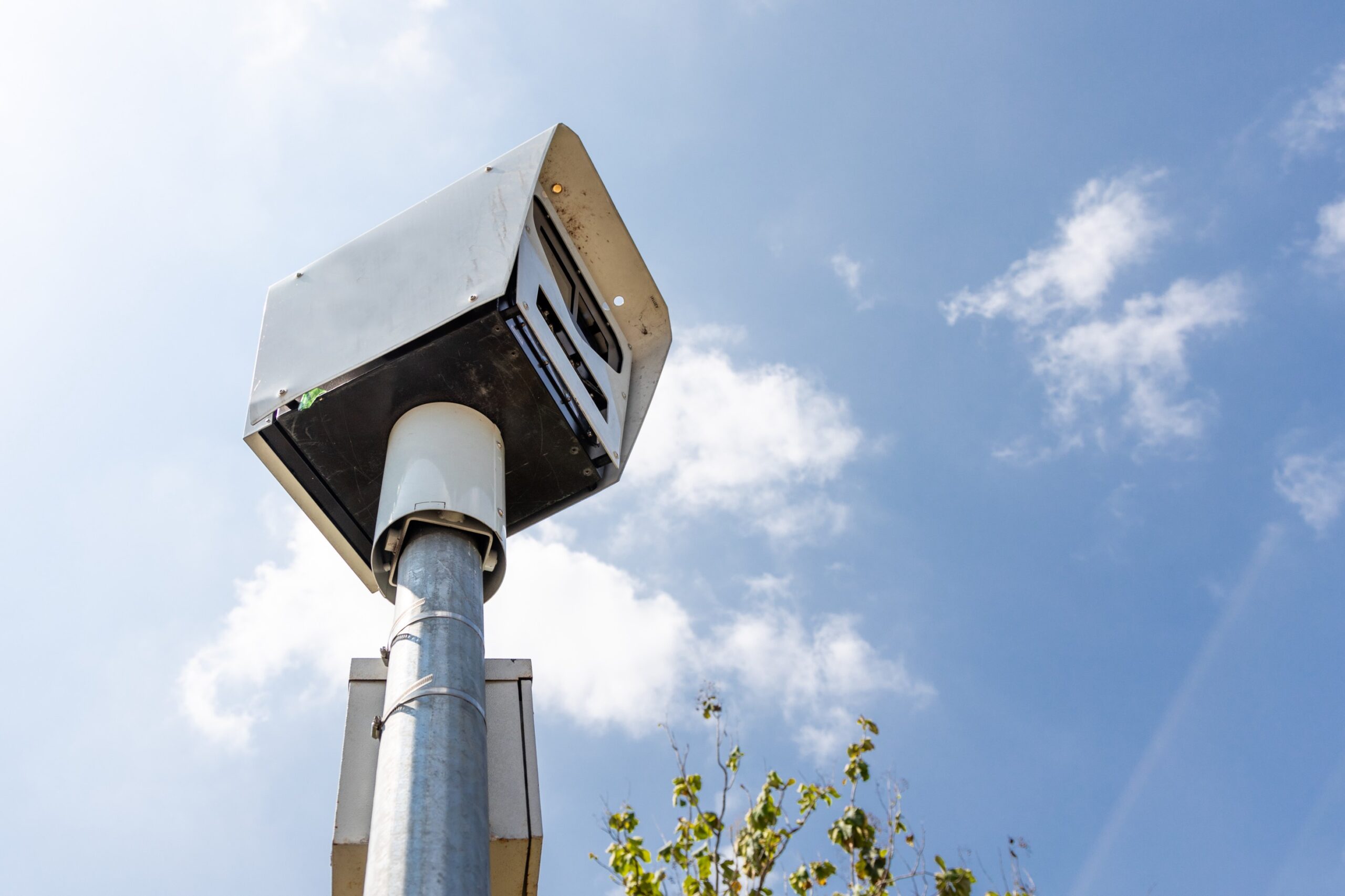How Police Radar Works in Kansas City: Speed Measurement Principles Explained

Understanding How Kansas City Police Use Radar to Measure Speed
Radar speed is a chief weapon in traffic enforcement across Kansas City. In particular, every day, police officers employ radar technology to identify speeding cars and ensure safety on roads. This equipment is accurate, quick, and backed by decades of tested and proven science.
The science of radar-measuring speed appears to be complex, but it is based on straightforward physics. When a radar beam hits a moving car, it reflects with a slightly different frequency. Radar detects that variation and calculates the speed of the car in a fraction of a second.
The device gives police an effective tool for observing driver behavior and reducing accidents caused by speeding.
The Science Behind Police Radar
Police radar is founded on the Doppler effect. When an object moves towards or away from a source of radar, the frequency of the radio waves that are bounced back varies.
This is used to apply it to Kansas City traffic stops:
- The police officer directs the radar gun at a car coming toward him.
- The radar fires a radio wave that hits the car and comes back as a reflection.
- The unit measures the difference between the sent and received signals.
- That change is equivalent to the speed of the car.
The more the vehicle moves, the greater the change in frequency. The radar displays the product in miles per hour so officers can compare it to posted speeds.
Kansas City police utilize both stationary and mobile radar units. Stationary radar takes arriving or departing traffic from a fixed point. Moving radar can calculate speed while the patrol car is moving.
Types of Radar Used by Kansas City Police
Kansas City police use different types of radar depending on the location. Each of them serves a specific purpose in managing traffic.
Stationary Radar
Used when the patrol vehicle is stationary. It shoots radar beams at approaching cars and captures their speed.
Moving Radar
Used in moving patrol vehicles. Both the speed of the patrol vehicle and the target car are tracked by it.
Handheld Radar Guns
Light and simple to use. Police point them at traffic coming from roadside locations or cruisers.
Directional Radar
This type splits the difference between vehicles headed toward and away from the radar. It clears up confusion in heavy traffic.
Multi-Directional or Dual Antenna Radar
Functional in congested Kansas City areas, this radar can scan more than one way at a time, targeting several lanes or intersections simultaneously.
Each device must be tested and calibrated regularly to ensure accuracy.
How Kansas City Police Maintain Radar Accuracy
Accuracy is essential in radar speed enforcement. Kansas City police officers must strictly follow procedures to ensure every reading is correct.
- Pre- and Post-Shift Calibration: The officers test the accuracy of the radar with tuning forks before and after each shift. The fork vibrates with a consistent frequency, confirming if the radar is taking a reading accurately.
- Certified Training: Special training is provided to all radar operators in Kansas City. They are taught to identify likely faults, such as reflections from objects near.
- Weather and Traffic Awareness: Radar works best in clear weather. Officers adjust in poor weather and place themselves at alternative angles to receive accurate readings.
- Right Setup: The radar must be pointed in the right direction and held at a fixed angle. A wrong setup can provide false readings.
When used correctly, radar is very accurate — usually within a mile per hour.
Misconceptions About Radar Speed Measurement
Most Kansas City drivers believe radar will make enormous mistakes. In fact, most errors are caused by a lack of maintenance or improper use and not the technology.
Some common myths are:
“Radar picks up all cars on the road.”
Not at all. Police officers use visual observation before using radar to confirm the target vehicle.
“Radar doesn’t work in the rain.”
Heavy rain reduces the range somewhat, but only very rarely gives false readings.
“Metal signs or trucks confuse the radar.”
More modern radar screens out large reflective surfaces to focus on moving objects.
“You can jam police radar.”
Missouri makes radar jammers illegal. Their use spawns criminal charges.
Kansas City officers apply technique and training to properly interpret readings.
Legal Standards for Radar Use in Kansas City
For a radar reading to stand in a Kansas City court, some criteria have to be fulfilled:
- The officer is trained in radar usage.
- The radar device itself is certified and tested frequently.
- There should be records of the calibration to be produced on request.
- The officer should spot the speeding car before issuing the ticket.
If any one of these conditions is not fulfilled, a defense attorney can challenge the ticket.
Law firms like Speeding Ticket KC typically review radar-based cases to check for missing calibration logs or abuse. This avoids drivers from unjust treatment.
Radar and Laser Speed Measurement
Kansas City police officers do use laser (LIDAR) guns, but radar is more common. Radar is better for long-range detection and moving patrol vehicles.
Laser speed measurement uses a focused beam of light instead of radio waves. It takes faster, accurate readings but works best aimed at a target vehicle.
Radar, on the other hand, can be aimed at more than one lane and is more suited to Kansas City freeways and wide intersections.
When Radar Evidence Can Be Challenged
No information is infallible. With sophisticated equipment, mistakes can still happen. Radar speeds can be challenged in certain instances:
- The radar was not calibrated.
- The officer did not complete the required training.
- Weather conditions were affecting visibility.
- The radar was detecting the incorrect vehicle in heavy traffic conditions.
A defense attorney can request the model of the radar, records of training, and calibration records. In case things do not add up, the ticket can be discarded.
That is why an understanding of how radar operates will be able to protect the rights of Kansas City drivers.
How Police Use Radar in Real Kansas City Scenarios
Radar is an important asset in keeping Kansas City’s high-traffic streets safe. Officers utilize it in several ways:
- Highway Patrols: Tracking excessive speeds on I-70, I-435, and other high-traffic roads.
- Neighborhood Monitoring: Tracking speeders in areas around schools or residential areas.
- Accident Prevention: Placing radar units in areas of high risk to slow speeding drivers.
- Special Enforcement Campaigns: Running speed checks during holiday weekends or rush hour.
Kansas City police traffic enforcement teams use radar data to identify where issues are located and create safety improvements.
Why Proper Radar Use Keeps Everyone Safe
Used correctly, radar serves both drivers and pedestrians. It prevents reckless driving and reduces serious crashes.
For officers, it’s a clear, unbiased speed measurement. For drivers, it ensures fairness because radar readings must meet legal standards before a ticket is issued.
Kansas City’s goal isn’t to ticket speeders, but to get the roads safer for everyone.
Final Words
Radar speed measurement remains a trusted tool for Kansas City police. It’s accurate, consistent, and scientifically founded — the best available method for traffic speed measurement.
Motorists have a better understanding of why they were stopped — and how to respond if they think there was an error — when they understand how radar works.
If you were given a radar speeding ticket in Kansas City, call Speeding Ticket KC. Our experienced Kansas City traffic ticket lawyers can review your case, calibrate radar testing, and check that the citation is completed properly.
FAQs
1. How does police radar detect speed in Kansas City?
Radar detects speed by radio waves sent toward your vehicle that rebound and record frequency changes.
2. Can the police in Kansas City utilize radar while moving?
Yes. Radar units on patrol cars track both the patrol car’s speed and the target vehicle’s speed.
3. Are radar tickets always valid?
They are valid when the radar is functioning correctly and operated by experienced officers. Mistakes may be made if procedures aren’t followed.
4. How do radar and laser speed guns compare?
Radar uses radio waves and tracks multiple lanes. Laser uses light beams for single-vehicle accuracy.
5. Can I fight a Kansas City radar speeding ticket?
Yes. An attorney may challenge calibration, training, or evidence issues to protect your driving record.

